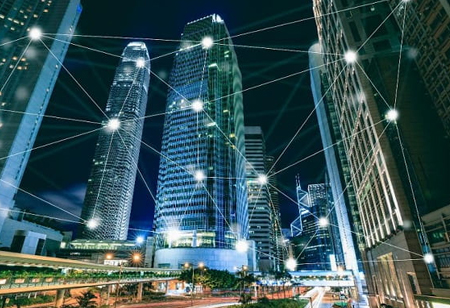THANK YOU FOR SUBSCRIBING
Be first to read the latest tech news, Industry Leader's Insights, and CIO interviews of medium and large enterprises exclusively from Gov CIO Outlook
THANK YOU FOR SUBSCRIBING

By
Government CIO Outlook | Saturday, December 26, 2020
Stay ahead of the industry with exclusive feature stories on the top companies, expert insights and the latest news delivered straight to your inbox. Subscribe today.
According to one research, the smart building solutions market will expand at a compound annual growth rate of 32 percent over the next eight years, generating 2 billion dollars in software and services revenue by 2026.
FREMONT, CA: A smart building usually looks like an ordinary building, with bricks and glass window panes, but at the core of an intelligent building are sensors that power building automation. Internet of Things (IoT) sensors and devices monitor HVAC and lighting, motion, temperature, electrical control, access control, and video surveillance. The data from these sensors then feeds a range of controllers that can support IT and operational staff to automate building management.
Smart buildings are a growing market. According to one research, the intelligent building solutions market will expand at a compound annual growth rate of 32 percent over the next eight years, generating 2 billion dollars in software and services revenue by 2026.
Smart Building Technology: Smart Sensor Types that Collect Data
Smart building sensors come in all sorts of types. Some are integrated sensor packages with sensors inside them to measure temperature, humidity, motion, and the number of people in the room. These sensors then relay data to controllers using a range of wireless protocols, including Wi-Fi, Bluetooth Low Energy, and other wireless technology.
These controllers can then be set up to keep the temperature within a specific range, for instance, or to operate the lights based on the occupancy schedule. They can also track system performance and alert facility managers to possible issues or system malfunctions. Following are four leading technologies for smart building automation systems:
• HVAC: Smart HVAC controls help reduce energy consumption in unoccupied building areas, detect and diagnose faults and reduce HVAC use, especially during peak energy demand periods.
• Smart Lighting: Smart lighting provides advanced controls that combine daylight and advanced occupancy and dimming functions to reduce over-lit spaces.
• Automated System optimization (ASO): ASO utilizes advanced technologies to capture and evaluate the operational and energy efficiency data of building systems and make adjustments to operations based on external variables such as occupancy trends, weather forecasts, and utility rates.
Check Out This : Motion Control Systems Solution Companies
• Distributed Energy Resources (DER): These are energy generation and storage facilities located at or near the point of use, independent of the power grid. Examples of DER include combined heat and electricity, solar photovoltaics and other renewables, and battery and thermal storage.
Check out: Top HVAC Solution Companies
See Also : Smart Building Solutions Companies
I agree We use cookies on this website to enhance your user experience. By clicking any link on this page you are giving your consent for us to set cookies. More info

However, if you would like to share the information in this article, you may use the link below:
www.govciooutlookapac.com/news/smart-building-technology-for-federal-agencies-nid-1181.html



